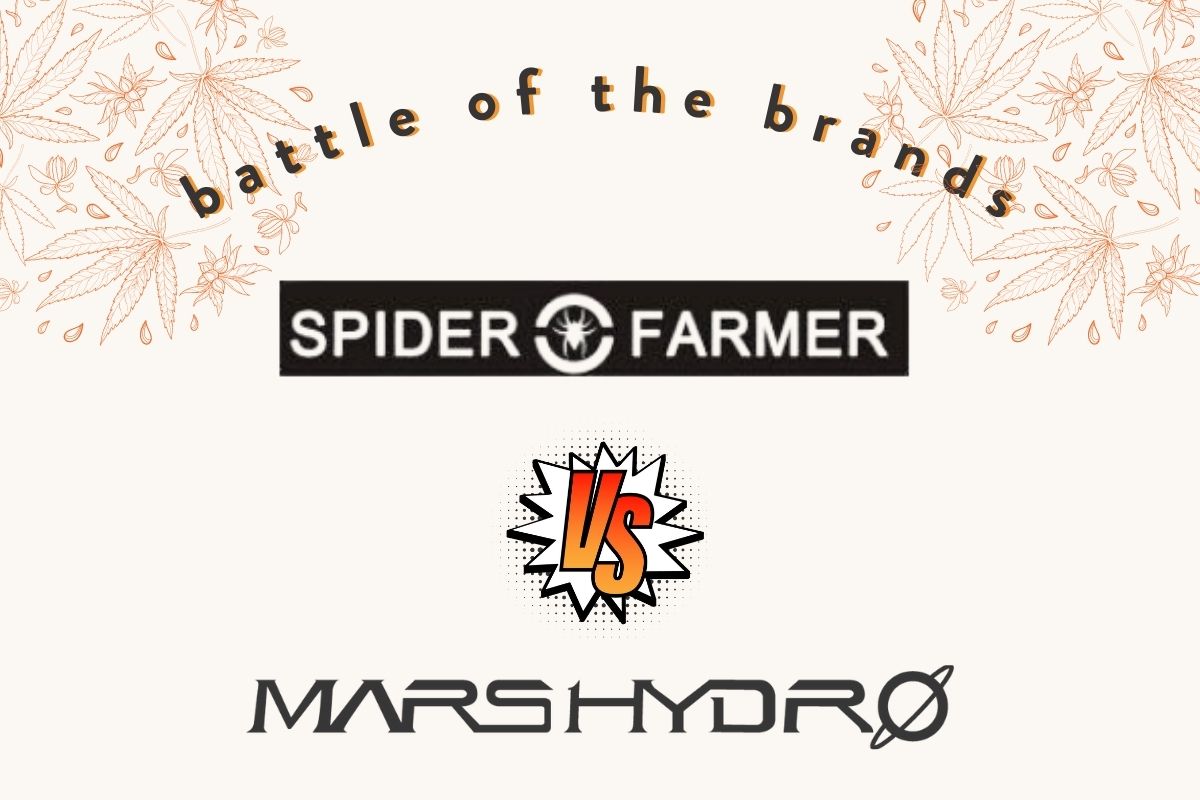When it comes to grow lights, there are 2 titans of industry – Spider Farmer and Mars Hydro. Both brands offer quality fixtures at very competitive prices.
The question is: which one best suits a cannabis plant’s lighting requirements?
That’s what we’re going to break down for you here; Spider Farmer vs. Mars Hydro.
comparing by size & design
Spider Farmer SF1000 vs Mars Hydro TS1000
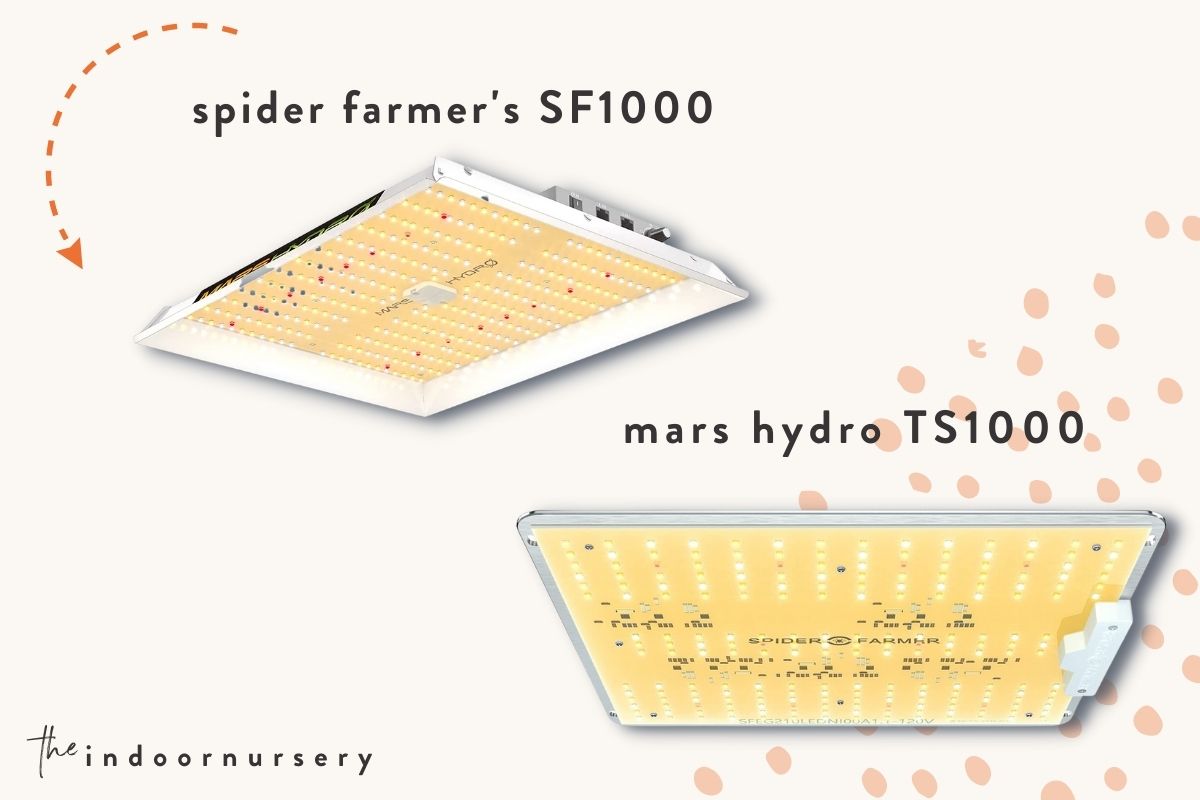
Spider Farmer’s SF1000 has a unique design and superb efficiency. It’s an incredible choice if you’re looking for small indoor grows. The sleek SF1000 features dimming abilities, with the LED diodes, gathered at the edge of the unit’s lighting panel to deliver uniform PPFD, maximize light absorption, and promote the production of impressive yields.
Whether your cannabis plants are germinating, vegging, or entering the flowering stage, the size of the spider farmer SF1000 makes it ideal for 3 x 3ft indoor growing. The energy-efficient Spider Farmer SF1000 delivers 100W and a spectral range of 3000K, 5000K, 660nm, and IR 760 nm. The newer versions of the SF1000 have impressive features, including the recent addition of Samsung LED diodes with 157.51lm/w luminous efficacy.
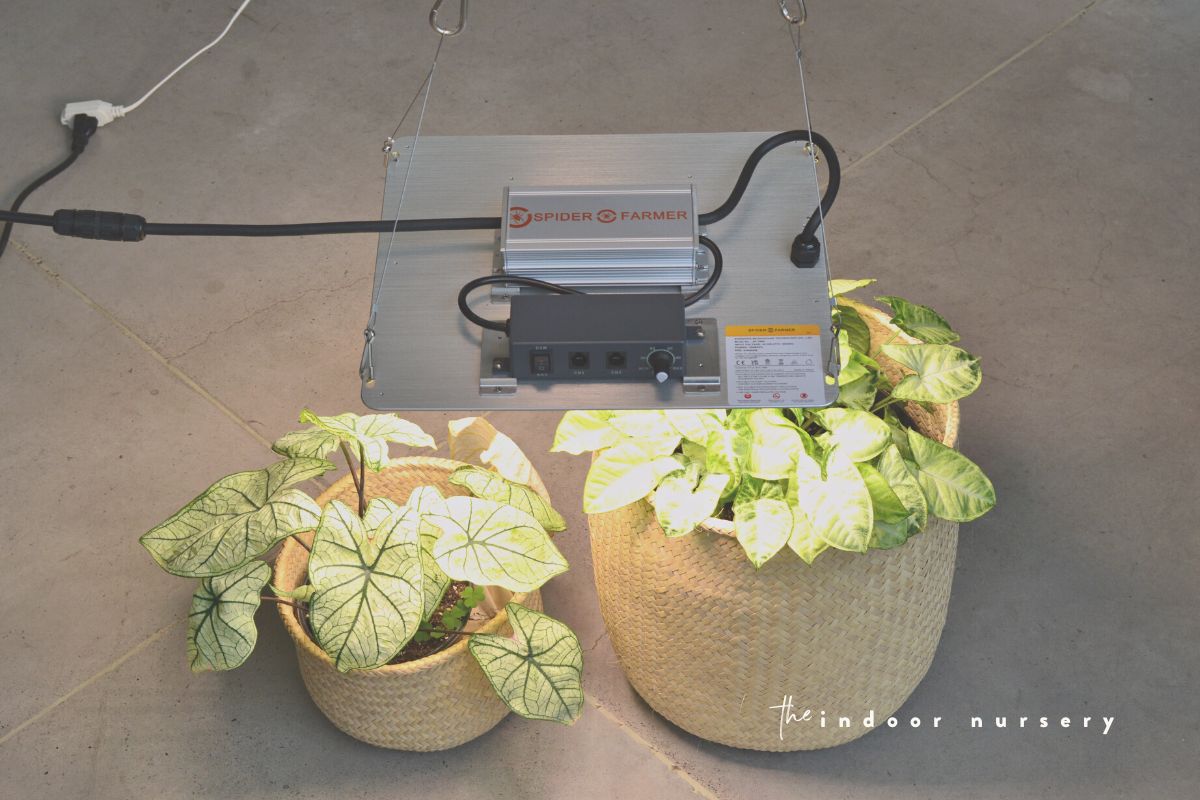
On the other hand, The Mars Hydro TS1000 is a compact, energy-efficient LED light that is perfect for low-light areas. Just like the SF1000, the Mars Hydro’s TS1000 will adequately cover a 3X3ft growing area. This 150W light is controlled by a remote, so you can adjust the brightness of the light’s 147.6lm/w luminous efficacy bulbs, color, and intensity without ever having to leave your seat or touch a switch. It also features a light sensor that automatically adjusts the light’s brightness to the room’s needs.
Out of the two grow lights, the Spider Farmer is the more affordable option. While both units possess the ability to daisy-chain – perfect for large-size grow tents or commercial operations.
Spider Farmer SF2000 vs Mars Hydro TSL2000
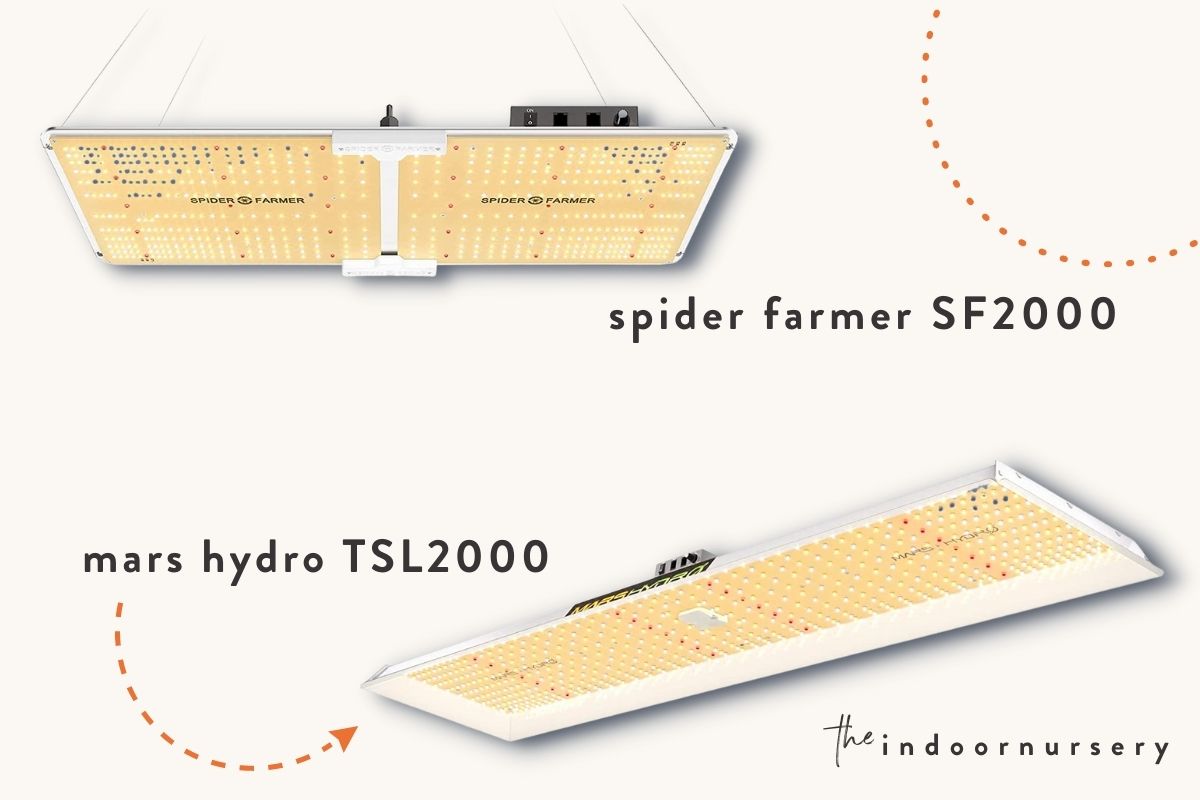
The Spider Farmer SF2000 is a high yielding LED grow light designed for better canopy penetration, boasting vegetation coverage of 3 x 4 ft and flowering coverage of 2 x 4 ft. This fixture features a MeanWell Driver and three color temperatures: white, warm white, and red. It delivers a broad spectrum of light ideal for growing various indoor plants, including, of course, the cannabis plant.
The Spider Farmer SF2000 light is designed to promote vigorous growth, optimal rates of photosynthesis, and the healthy production of buds. This model features a slim design and a very impressive lifespan of over 55000 hours.
So how does the TSL2000 compare?
The Mars Hydro TSL2000 is perfect for 3 x 5 ft vegetative stage and 2 x 4 ft flowering stage. Its large LED bar allows it to distribute light evenly throughout your grow tent.
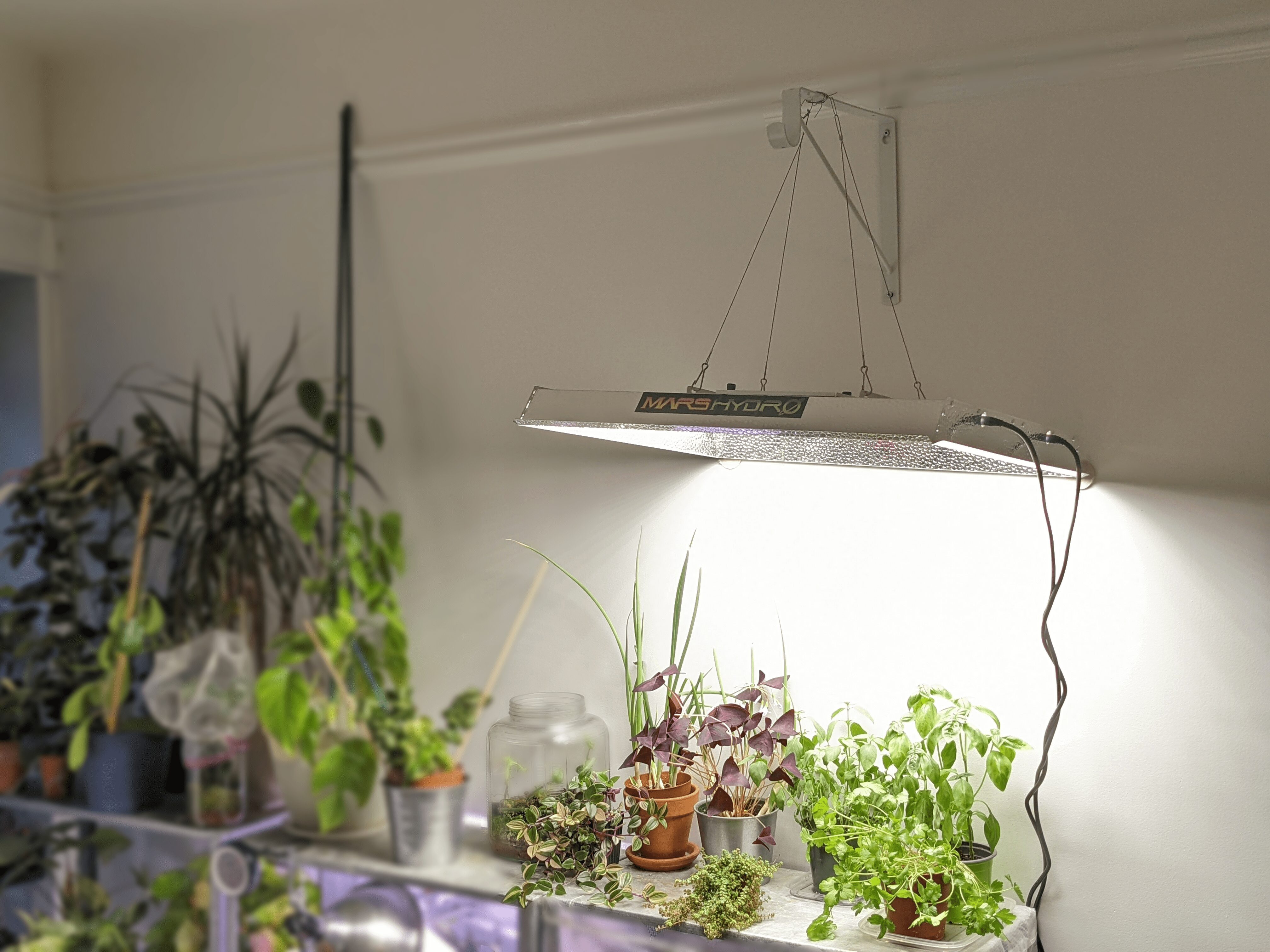
MARS HYDRO TSL2000 Led Grow Light is a high-end full spectrum grow light that emits a powerful and uniform spectral output. This light was designed to be used in all phases of plant growth, from seedling to harvest. With a total light output of PPF 717 umol/S and also a PPE of 2.6 umol/j, the TSL 2000 is perfect for replacing traditional 400W HPS grow lights.
Spider Farmer SF4000 vs Mars Hydro TS3000
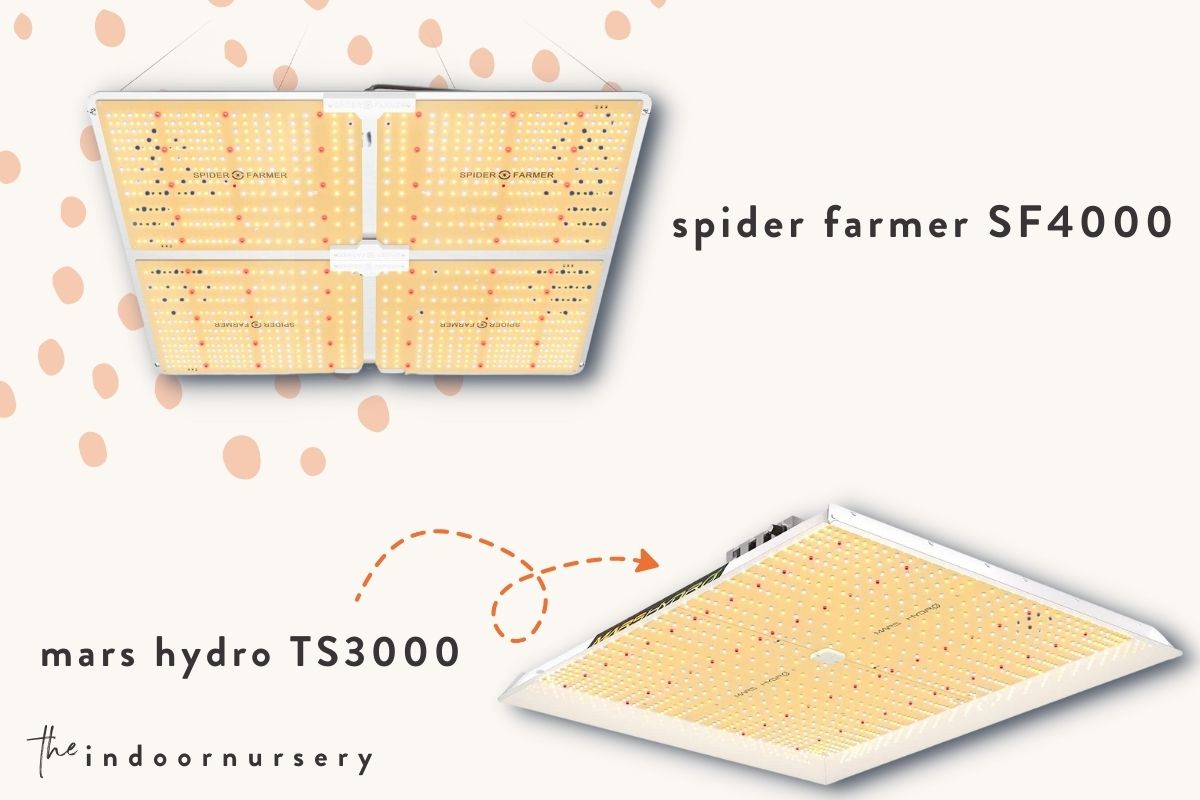
With 2.7μmol/J light output, the Spider Farmer SF4000 LED Grow Light is perfect for indoor gardening. Thanks to its Samsung LM301B diodes, this light has a 5 x 5 ft coverage area, which produces a full spectrum of light. The MeanWell driver allows you to dim the light as needed, making it perfect for any stage of growth.
If you’re looking for an LED grow light that packs a serious punch, look no further than the Mars Hydro TS-3000 450W. With its MeanWell driver and full spectrum output – 730-740nm Red IR/3200-4200Knm/5200-6800Knm -, this grow light is perfect for 4 x 4 ft or 5 x 5 ft grow tents. And thanks to its dimmable features, you can customize your lighting to perfectly match your cannabis plants’ lighting preferences.
Although the Mars Hydro TS3000 has a slightly lower light intensity than the SF4000, it still makes an excellent grow light. It features a new diode arrangement dense in the middle and sparse on the outer edge of the lighting panel, allowing the unit to provide uniform coverage.
Spider Farmer SF7000 vs Mars Hydro FC6500
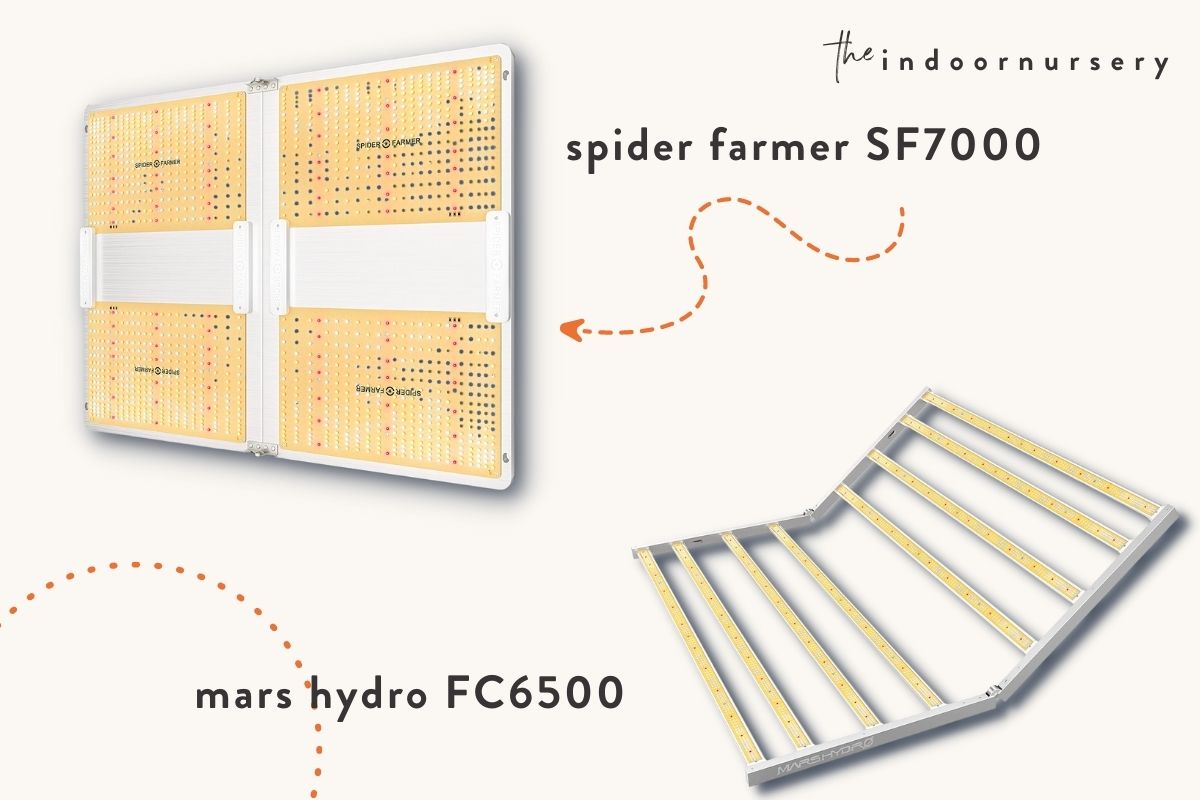
Spider Farmer SF7000 LED grow lights are the perfect choice for growing cannabis and other indoor plants. The panels combined provide full spectrum light that is dimmable, and have a coverage area of an impressive 6×6 ft. The panels feature Samsung LM301B LEDs coupled with Inventronics driver, which offer 2.8μmol/J luminous efficacy. This makes them an excellent choice for large home grows and commercial growers.
The Mars Hydro FC6500 is another excellent fixture with an extraordinary performance. The FC6500 is an impressive combination of design, energy efficiency, and coverage. It features 688 pcs Samsung LM301B and Osram 660nm Diodes – one of the best diodes combos on the market. The FC also delivers light uniformly across a wide area, with an energy efficiency of 2.85 µmol/J, contributing to its superior performance.
This panel also has a high-intensity spectrum with enhanced red (3200-4200K, 4800-5000k, and 650-665nm) and adopts a uniform photon distribution to maintain an even PPID and optimal PPF across the canopy. While the unit’s extended power Cord, Seoul semiconductors, infrared capabilities, and ultraviolet diodes are a tremendous bonus.
And to top it all off, the FC6500 has a max coverage of 5×5 ft, and a core coverage of 4×4 ft. So if you’re in the market for a top of the line, high-quality grow light – you simply can’t go wrong with the FC6500.
other things you’ll want to consider
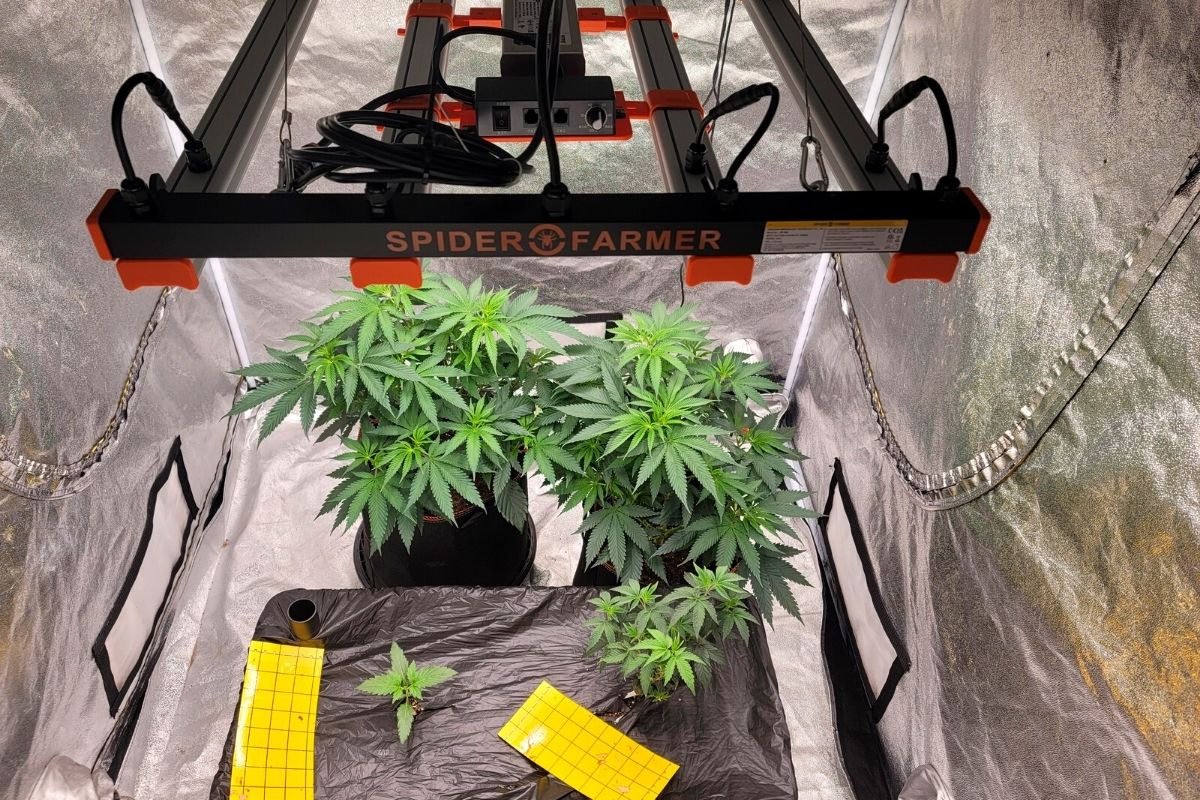
Spider Farmer grow lights and Mars Hydro grow lights promise a bountiful harvest and dense bud growth. But before you rush out and purchase yourself a new Spider Farmer or Mars Hydro grow light, be aware that there are a few factors you may wish to consider before settling on one model or another.
For one, some growers simply assume that better grow light is the most expensive grow light.
However, in some cases, this simply isn’t what should drive your purchasing decision.
Sure, like most things, the age old adage of “you get what you pay for” applies to grow lights. The thing is, when it comes to purchasing a grow light that suits your cannabis plant requirements, overkill simply isn’t necessary.
In fact, purchasing a light that is too large for a space can have disastrous effects on the health of your plants. Overexposing a cannabis plant to too much light will result in leaf burn and other health risks.
Our recommendation?
Source a grow light that’s suitable for the grow tent or grow space you have available. In doing so, you’ll save money and produce better yields.
energy efficiency
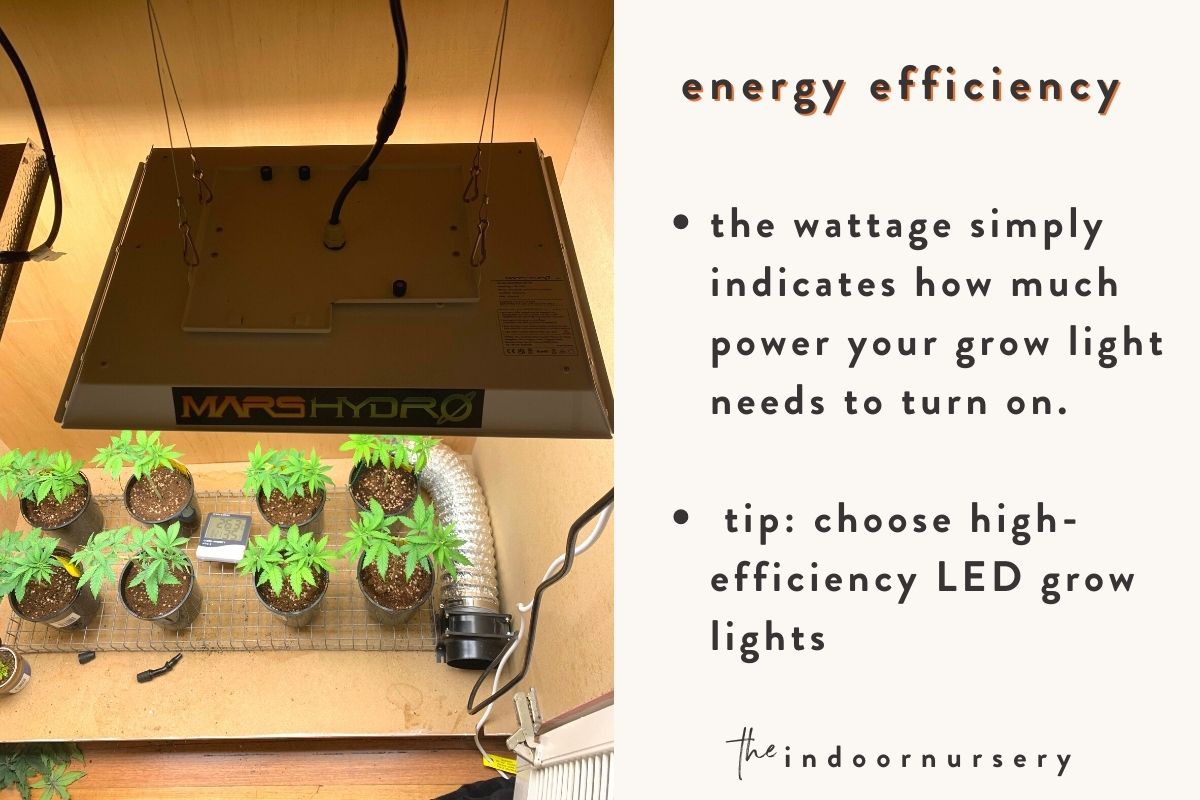
Energy efficiency should be one of the most important factors before choosing your grow light.
The reason?
Grow lights can be very energy intensive, can generate a lot of heat, and be expensive to run. Besides the fact that this is an added expense, a lot of growers just want to slow their roll when consuming energy because it can help slow the mining of our planet.
In fact, about 72% of experienced indoor growers say that energy efficiency is an important factor when purchasing grow lights.
To help you do this, opt for high-efficiency LED grow lights. If you’ve been growing plants with the traditional MH and HPS lights, you can save tons in utility expenses by switching to LEDs.
LEDs do so much more than reduce the cost of energy, they also produce less energy. Since LED grow lights generate almost no heat (aka energy), using LED lights will keep temperatures regulated and your energy bill low.
fanless design
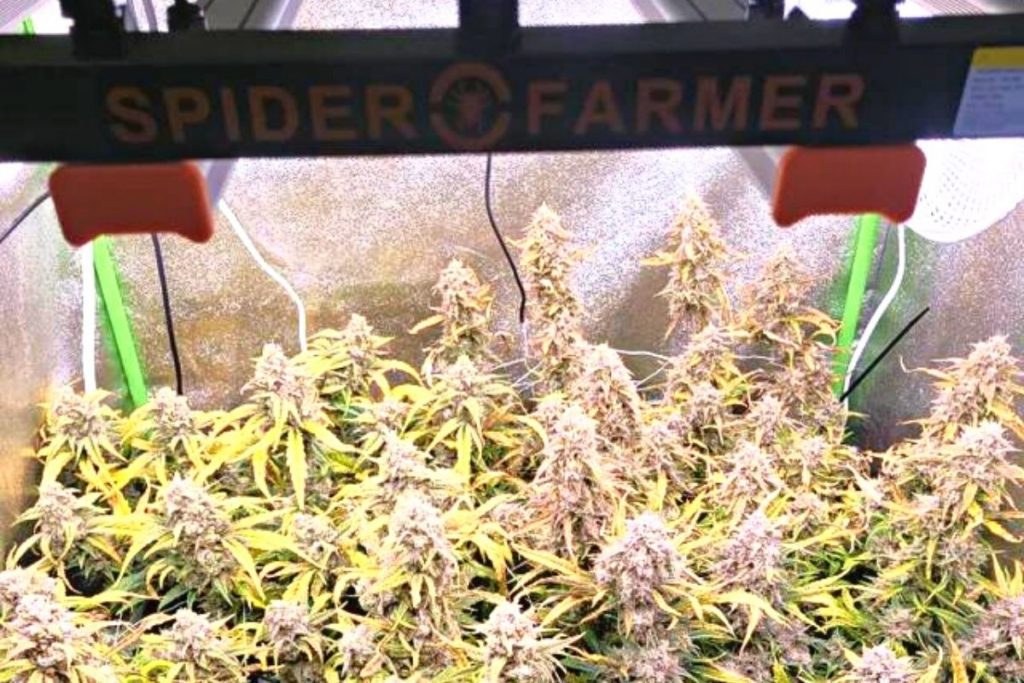
Light emits heat. Grow lights provide life-giving light for our plants to grow, but they can also raise the temperature of your grow room by several degrees. Too much heat can literally stunt the way your plants grow and cause poor yield.
For example, HPS lamps produce so much heat that indoor farmers must spend extra money on A/C, extraction fans, and cooling fans. Excess heat from these lamps could also be a safety hazard, especially when changing these bulbs or ballasts.
You barely have to worry about managing excess ambient heat in your grow space with LED grow lights.
Key takeaway: You can rest assured that most of the energy going into your LEDs turns into light, not heat.
What happens if you choose a model with/without a fan?
Compared to old-fashioned LED grow lights, fanless LEDs are easier to maintain and have a longer lifespan. If you’ve decided to upgrade your current LED grow lights, you should definitely consider the immense benefits of switching to a fan-less design.
The best LED grow lights come with fanless designs that prevent overheating within the fixture.
uniform light coverage
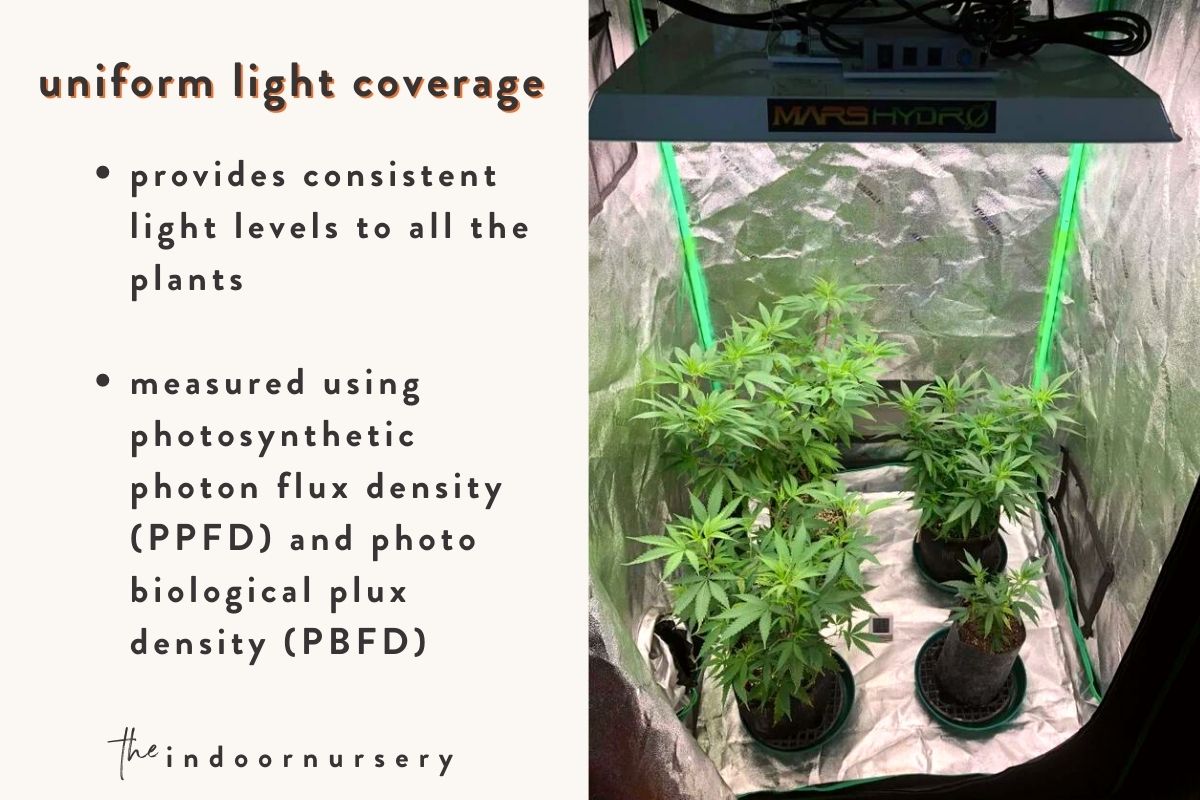
All your plants need light. You don’t want one plant to have an excellent yield while the next plant suffers from inadequate light. Uniform light coverage provides consistent light levels to all the plants across the tent. Non-uniform light makes it difficult for indoor farmers to have a bountiful yield, no matter how powerful the fixtures are.
A good grow light would have uniform light distribution across your grow tent. This is most commonly achieved with a reflective hood and diodes. Together, these components help deliver uniform lighting of the full light spectrum.
Alternatively, you can manually adjust the intensity, such as hanging the lights a bit lower to increase the intensity or a bit higher to improve coverage.
Uniformity can be measured using Photosynthetic Photon Flux Density (PPFD) and Photobiological Flux Density (PBFD).
What happens if you don’t have uniform light coverage?
If lighting from your grow light is not uniform, some plants will receive more light than others.
Naturally, the plants that receive more light will grow bigger and may shade out plants that get smaller amounts of light. Or some plants within a grow space may receive too much light, experiencing leaf burn as a consequence. Non-uniform lighting can also cause problems with uneven water use. Plants receiving more light will dry faster than those receiving less light.
This is why knowing your grow light’s coverage area is vital. The size and light intensity help determine your coverage area, as does a light’s hanging height. The farther the distance between your lights and plants, the larger the coverage. However, you will have a lower light intensity.
customer support and warranty
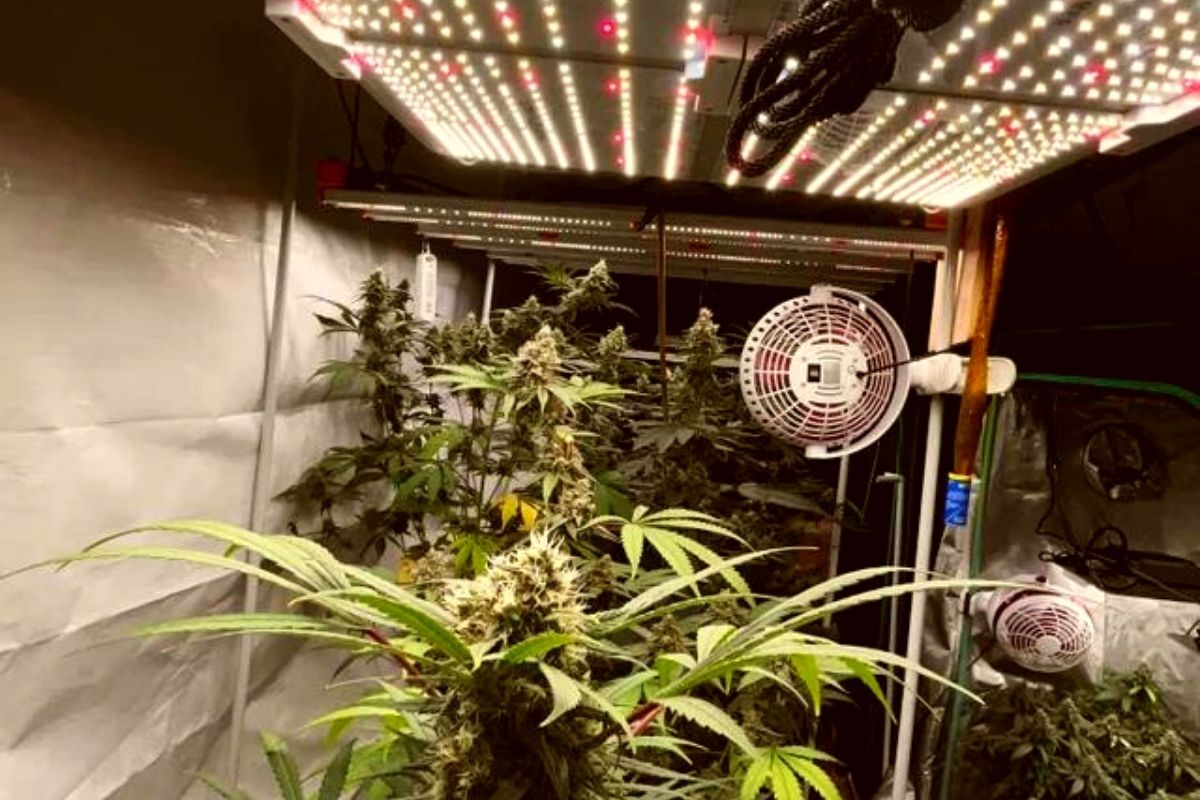
When you purchase a grow light, you expect it to work for years without any problems. Unfortunately, this is not always the case. Many customers find themselves dealing with warranty or customer service issues after purchasing a grow light.
If you are having problems with your grow light, the best thing to do is to contact the manufacturer’s customer service department. Most manufacturers have a toll-free number that you can call to get help. Be prepared to provide the model number of your light and your shipping address.
If you purchased your light from an online retailer, you should contact them first. Many retailers offer excellent customer service and will be happy to help you resolve any problems you are having with your light.
Most manufacturers offer a warranty on their products. This warranty usually covers defects in materials and workmanship.
Generally, customers rate both Spider Farmer and Mars Hydro well in terms of customer service and warranty issues.
For instance:
- Spider Farmer lights provide 5 years of after-service local maintenance centers in the USA, Canada, United Kingdom, and Germany;
- MARS HYDRO has a 5-year warranty with a full-service warranty in the first year.
so which do we choose?
We’ve already tested a MARS HYDRO grow light and had a positive, albeit unfortunate experience. After contacting the MARS HYDRO team and letting them know that a lot of our plants got burned during the experiment with the TSW 2000, the team recommended we try the TSW 1000 instead. As for the set up and ease of use, it seems solid and easy.
Spider Farmer has comparable models with just as reliable features. The Reddit community seems to have two camps: team MH and team SF. So it really comes down to your own personal experience and which you take a leap with.
More about lighting
- How To Use Grow Lights For Indoor Plants
- 5 Best Grow Light Strips For Indoor Plants
- Our *hands on* MARS HYDRO TSW 2000 review (with photos)
- Understanding weed light cycles: Get the most from your harvest
- Indoor plant lighting guide: where to put your plants
- How close should grow lights be to plants?
- Best grow lights for seedlings: how to sprout your seedlings safely
- Guide: full-spectrum light for plants (+grow light spectrum chart)
- 10 best LED grow lights for indoor plants

